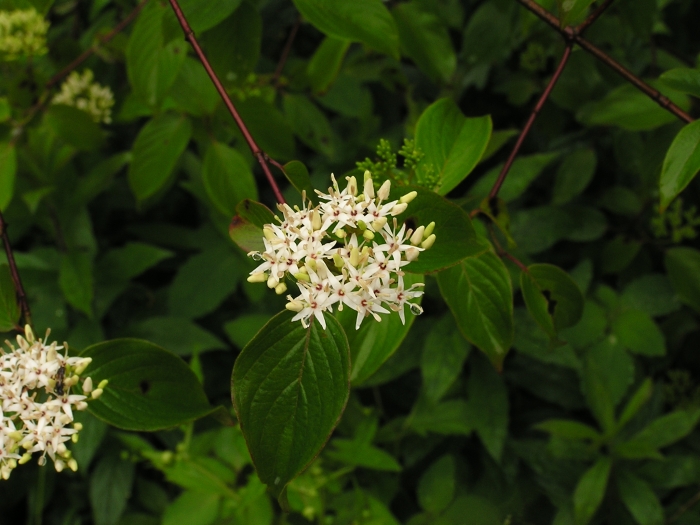Silky Dogwood
(Cornus obliqua)
Silky Dogwood (Cornus obliqua)
/
/

User:SB_Johnny
CC BY-SA 3.0
Image By:
User:SB_Johnny
Recorded By:
Copyright:
CC BY-SA 3.0
Copyright Notice:
Photo by: User:SB_Johnny | License Type: CC BY-SA 3.0 | License URL: http://creativecommons.org/licenses/by-sa/3.0/ | Uploader: SB Johnny | Publisher: Wikimedia Commons | Title: Cornus_amomum_flowers_01.JPG | Notes: Benthamidia florida 撮影データ (Data) : 撮影地 (Place): [[:ja:関東地方|関東地方]],[[:en:Kanto region|Kanto region]] : 撮影年月日 (Date): 2005年10月20日 (13:26@JST, 20-Oct-2005) : 撮影者 (Photographed by): ~~~ : ライセンス |
































Estimated Native Range
Summary
Cornus obliqua, commonly known as Silky Dogwood, is a deciduous shrub native to wetland margins, stream banks, and moist forested areas in Eastern North America. It typically grows to a height of 6-12 feet (1.8-3.7 meters) and a width of 4-10 feet (1.2-3 meters). The shrub has a multi-stemmed, rounded form with opposite leaves that are medium to dark green. It produces clusters of small, creamy white flowers in late spring to early summer, which are followed by blue to purple berries that attract birds. The bark is reddish-brown and may exfoliate with age, adding to the plant’s winter interest.
Silky Dogwood is valued for its wildlife benefits, particularly for birds that feed on its berries. It is used in cultivation for naturalized plantings, as a border shrub, and for erosion control along waterways due to its fibrous root system. This shrub thrives in moist, well-drained soils and can tolerate occasional flooding. It prefers full sun to part shade and requires consistent moisture for optimal growth. While generally low-maintenance, it can be susceptible to dogwood anthracnose and borers. Pruning may be necessary to maintain a desirable shape and to remove any diseased or damaged wood.CC BY-SA 4.0
Silky Dogwood is valued for its wildlife benefits, particularly for birds that feed on its berries. It is used in cultivation for naturalized plantings, as a border shrub, and for erosion control along waterways due to its fibrous root system. This shrub thrives in moist, well-drained soils and can tolerate occasional flooding. It prefers full sun to part shade and requires consistent moisture for optimal growth. While generally low-maintenance, it can be susceptible to dogwood anthracnose and borers. Pruning may be necessary to maintain a desirable shape and to remove any diseased or damaged wood.CC BY-SA 4.0
Plant Description
- Plant Type: Shrub
- Height: 6-12 feet
- Width: 4-10 feet
- Growth Rate: Moderate
- Flower Color: White
- Flowering Season: Spring, Summer
- Leaf Retention: Deciduous
Growth Requirements
- Sun: Full Sun, Part Shade
- Water: Medium, High
- Drainage: Slow, Medium
Common Uses
Bee Garden, Bird Garden, Butterfly Garden, Deer Resistant, Fragrant, Hummingbird Garden, Rabbit Resistant, Street Planting
Natural Habitat
Wetland margins, stream banks, and moist forested areas in Eastern North America
Other Names
Common Names:
Scientific Names: , Cornus obliqua, Cornus amomum subsp. obliqua, Cornus purpusii, Swida obliqua, Cornus sericea var. schuetzeana, Swida purpusii, Thelycrania purpusii,
GBIF Accepted Name: Cornus amomum subsp. obliqua (Raf.) J.S.Wilson